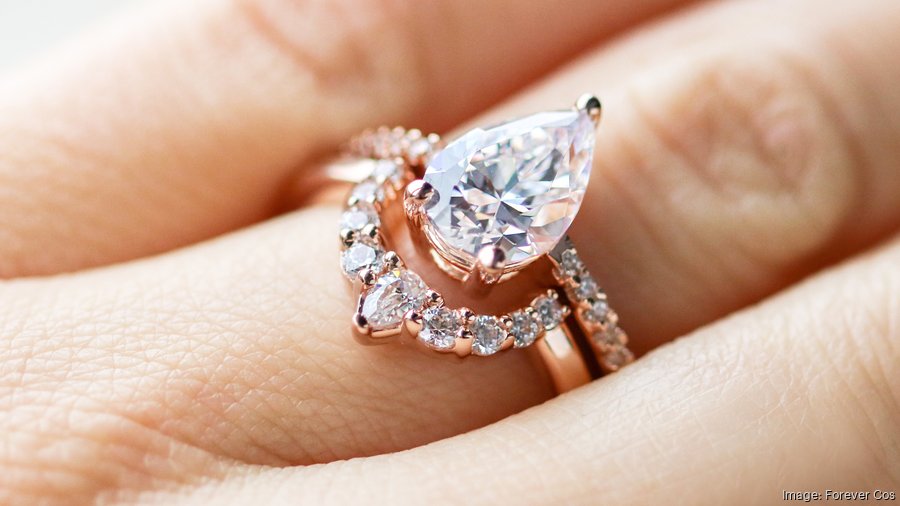In today’s conscientious society, the demand for ethically sourced products has reached unprecedented heights. Among these, diamonds hold a significant place. This guide delves into the world of ethical diamonds, focusing specifically on man-made diamonds. We will explore their creation, benefits, and why they are a superior choice for the ethically minded consumer.
Understanding Ethical Diamonds
Ethical diamonds, also known as conflict-free diamonds, are sourced and produced in a manner that ensures environmental sustainability and respects human rights. Traditionally, diamond mining has been associated with severe ethical issues, including funding conflicts, exploitative labor practices, and environmental degradation. Ethical diamonds aim to address and eliminate these concerns.
Man Made Diamonds: The Ethical Choice
Man-made diamonds, also known as lab-grown or synthetic diamonds, are created using advanced technological processes that replicate the natural diamond formation. These diamonds are physically, chemically, and optically identical to mined diamonds but are produced in a controlled, ethical environment.
Benefits of Man Made Diamonds
Choosing man-made diamonds offers several significant advantages:
1. Ethical Production
Man-made diamonds are produced in laboratories under strict ethical standards. This ensures that no human rights abuses or environmental harm occur during their creation.
2. Environmental Sustainability
Traditional diamond mining can have devastating impacts on the environment, including habitat destruction, water pollution, and carbon emissions. In contrast, the production of lab-grown diamonds has a significantly lower environmental footprint.
3. Cost-Effectiveness
Man-made diamonds are generally more affordable than mined diamonds. This cost difference arises from the shorter supply chain and more efficient production processes.
4. Quality and Purity
Lab-grown diamonds often have fewer impurities and defects compared to natural diamonds. This is because the controlled environment allows for better quality management.
5. Traceability
Man-made diamonds come with clear traceability, ensuring transparency in their origin and production processes. This provides peace of mind to consumers regarding the ethical standards behind their purchase.
How Man Made Diamonds are Created
Man-made diamonds are produced using two primary methods: High Pressure High Temperature (HPHT) and Chemical Vapor Deposition (CVD).
High Pressure High Temperature (HPHT)
The HPHT method mimics the natural diamond formation process. A small diamond seed is placed in carbon and exposed to extremely high pressure and temperature, causing the carbon to crystallize and form a diamond around the seed.
Chemical Vapor Deposition (CVD)
The CVD method involves placing a diamond seed in a chamber filled with carbon-rich gas. The gas is ionized into plasma, causing carbon atoms to deposit onto the seed, layer by layer, growing into a diamond.
Caring for Your Man Made Diamond
Maintaining the brilliance of your man-made diamond involves regular cleaning and proper care. Here are some tips to keep your diamond sparkling:
1. Regular Cleaning
Clean your diamond regularly with mild soap and warm water. Use a soft brush to gently scrub away any dirt or residue.
2. Avoid Harsh Chemicals
Remove your diamond jewelry when using household cleaners or engaging in activities that involve harsh chemicals, as these can damage the diamond.
3. Professional Inspections
Have your diamond jewelry professionally inspected and cleaned annually to ensure its settings are secure and to maintain its brilliance.
4. Proper Storage
Store your diamond jewelry separately from other pieces to prevent scratches. Use a soft cloth or a jewelry box with compartments.
Ethical Considerations in the Diamond Industry
The diamond industry has been under scrutiny for decades due to the ethical implications of traditional mining. Man made diamonds offer a solution to many of these issues:
1. Conflict-Free
Man-made diamonds do not fund wars or conflicts. Their production is entirely transparent and traceable, ensuring they are conflict-free.
2. Fair Labor Practices
Lab-grown diamonds are produced in facilities that adhere to strict labor standards, ensuring fair wages and safe working conditions for employees.
3. Environmental Responsibility
The environmental impact of man-made diamonds is significantly lower than that of mined diamonds. Their production requires less energy, water, and land, and generates fewer carbon emissions.
Frequently Asked Questions
1. Are man-made diamonds real diamonds?
Yes, man-made diamonds are real diamonds. They have the same physical, chemical, and optical properties as mined diamonds.
2. How can I tell if a diamond is man-made?
Specialized equipment is required to distinguish between man-made and mined diamonds. Professional jewelers can provide certification and clarity on the origin of your diamond.
3. Are man-made diamonds less valuable than mined diamonds?
While man-made diamonds are generally more affordable, their value is comparable to that of mined diamonds due to their identical properties and ethical advantages.
4. Can man-made diamonds be certified?
Yes, man-made diamonds can be certified by the same gemological institutes that certify mined diamonds, such as the GIA (Gemological Institute of America).
5. Are there color and clarity options available in man-made diamonds?
Man-made diamonds are available in a wide range of colors and clarities, similar to mined diamonds. This variety allows consumers to choose diamonds that meet their specific preferences and budgets.
Conclusion
Man-made diamonds represent the future of ethical and sustainable luxury. They offer the same beauty and quality as mined diamonds without the associated ethical and environmental concerns. By choosing man-made diamonds, consumers can enjoy stunning, high-quality jewelry while making a responsible and informed decision. These diamonds not only symbolize love and commitment but also reflect a commitment to ethical standards and environmental stewardship.


/odishatv/media/post_attachments/uploadimage/library/16_9/16_9_0/recent_photo_1745068942.jpg)
